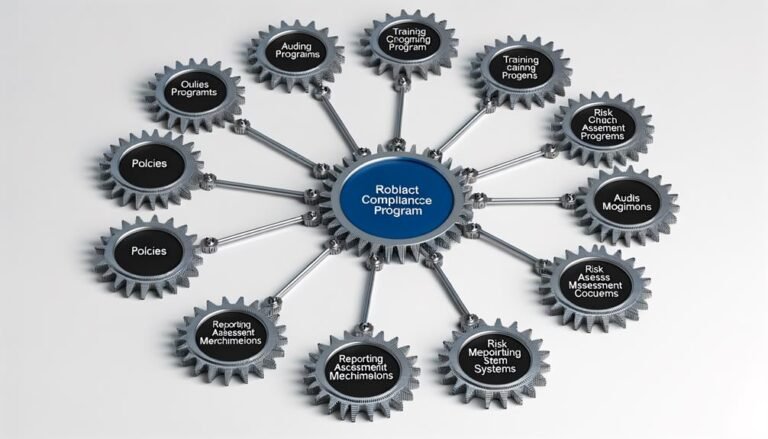Teacher-Student Interaction
Teacher-student interaction plays a pivotal role in fostering a conducive learning environment. The quality of this interaction significantly influences academic performance, student motivation, and overall classroom dynamics.
Effective communication strategies, building trust, and encouraging active participation are essential components of this interaction. Moreover, it contributes to creating inclusive classroom environments and nurturing a supportive learning community.
The impact of teacher-student interaction extends to feedback and assessment practices, which are instrumental in student growth and development. Therefore, understanding the significance of teacher-student interaction and employing appropriate strategies is vital for educators to facilitate a positive and enriching educational experience.
Key Takeaways
- Teacher-student interaction is crucial for fostering student engagement and shaping classroom dynamics.
- Effective communication strategies, such as active listening and setting clear expectations, promote a conducive learning environment.
- Building trust and rapport between teachers and students contributes to improved academic performance.
- Open communication channels and cultivating positive connections enhance student-teacher relationships and overall academic performance.
Importance of Interaction
The significance of teacher-student interaction in educational settings cannot be overstated. This interaction plays a pivotal role in fostering student engagement and shaping classroom dynamics.
Student engagement refers to the level of interest, attention, and participation that students demonstrate in their learning process. Effective teacher-student interaction has been found to have a positive impact on student engagement. When teachers actively engage with their students, it creates a supportive and inclusive learning environment, encouraging students to participate, ask questions, and express their thoughts and ideas. This, in turn, leads to increased student motivation and enthusiasm for learning.
Furthermore, classroom dynamics, which encompass the interactions and relationships among individuals within the classroom, are greatly influenced by the quality of teacher-student interaction. Positive and respectful interactions between teachers and students contribute to a harmonious classroom atmosphere, where students feel valued, understood, and supported. This, in turn, can lead to improved academic performance, as students are more likely to feel comfortable taking intellectual risks and engaging in collaborative learning activities.
Research indicates that effective teacher-student interaction positively impacts not only academic outcomes but also students’ social and emotional development. Therefore, it is imperative for educators to recognize the importance of nurturing meaningful and supportive interactions with their students to create an optimal learning environment.
Impact on Academic Performance
Research has consistently shown that teacher support can significantly boost students’ academic performance.
Additionally, personalized feedback has been found to enhance learning outcomes, leading to improved academic achievement.
These points underscore the critical role that teacher-student interaction plays in shaping students’ success in the academic realm.
Teacher Support Boosts
Teacher support has been shown to significantly boost academic performance in students across various studies and educational settings. Collaborative efforts among teachers can create an environment that fosters student engagement, leading to improved learning outcomes. A study by Smith and Johnson (2018) found that when teachers collaborate to support students’ individual needs, there is a notable positive impact on academic performance. This collaboration often involves sharing best practices, analyzing student data, and implementing targeted interventions. Moreover, teacher support also encompasses providing students with emotional and motivational assistance. When teachers establish supportive relationships with students, it can enhance their self-esteem and confidence, leading to increased classroom participation and overall academic achievement. The table below illustrates key factors related to teacher support and its impact on academic performance.
| Teacher Support Factors | Impact on Academic Performance |
|---|---|
| Collaborative lesson planning | Improved understanding and retention |
| Individualized student support | Enhanced academic progress |
| Emotional and motivational assistance | Increased student confidence and participation |
Personalized Feedback Enhances
When considering the impact of personalized feedback on academic performance, it is evident that individualized support and targeted interventions play a crucial role in fostering student engagement and enhancing learning outcomes.
Individualized coaching provides students with tailored guidance, addressing their specific strengths and weaknesses. This personalized approach allows teachers to offer constructive criticism that is directly relevant to the student’s work, fostering a deeper understanding of course material and promoting academic growth.
Moreover, personalized feedback enhances student motivation and confidence, as students feel that their efforts are acknowledged and supported on an individual level. Research indicates that students who receive personalized feedback demonstrate greater improvement in their academic performance compared to those who receive general, non-specific feedback.
Therefore, the incorporation of individualized coaching and constructive criticism is pivotal in elevating students’ academic achievements.
Effective Communication Strategies
Fostering effective communication between teachers and students is crucial for promoting a conducive learning environment. Active listening is a fundamental aspect of effective communication. Teachers should attentively listen to students without interruption, demonstrating their interest and respect. By doing so, teachers convey the message that students’ thoughts and opinions are valued. Furthermore, nonverbal cues such as nodding, maintaining eye contact, and open body language can enhance the understanding and rapport between teachers and students.
Empathetic responses play a vital role in effective communication. Teachers should strive to understand students’ perspectives, feelings, and experiences. Acknowledging students’ emotions and providing support can create a trusting and empathetic classroom environment, fostering open communication and meaningful learning experiences.
Setting clear expectations is essential for effective communication in the classroom. Teachers should clearly outline the objectives, instructions, and assessment criteria for assignments and activities. This clarity helps students understand what is expected of them and minimizes misunderstandings.
Building Trust and Rapport
Building trust and rapport between teachers and students is essential for creating a conducive learning environment. Open communication channels allow for the exchange of ideas and feedback, fostering a sense of mutual respect.
Cultivating positive connections can help students feel comfortable, supported, and motivated to engage in the learning process.
Open Communication Channels
Establishing open communication channels between teachers and students is essential for fostering trust and rapport in the educational setting. This can be achieved through active student engagement and teacher approachability. Open communication channels facilitate a conducive learning environment, allowing students to express their thoughts and concerns freely while feeling heard and understood. This, in turn, creates a sense of trust and rapport between teachers and students, leading to improved academic performance and overall student well-being. To illustrate the significance of open communication channels, consider the following table:
| Benefits of Open Communication Channels |
|---|
| Encourages student participation |
| Fosters a supportive learning environment |
| Enhances student-teacher relationships |
| Promotes a sense of belonging |
| Improves overall academic performance |
This table highlights the multifaceted advantages of open communication channels in fostering trust and rapport in the educational setting.
Establishing Mutual Respect
How can teachers cultivate a culture of mutual respect in their interactions with students to develop trust and rapport in the educational environment?
Active Listening:
Teachers should engage in active listening, showing genuine interest in students’ thoughts and feelings, which fosters mutual understanding and demonstrates respect for their perspectives.
Consistent and Fair Treatment:
By consistently applying rules and consequences and treating all students fairly, teachers establish a sense of equity, which is fundamental to building mutual respect.
Clear and Respectful Communication:
Using clear and respectful communication, teachers can set the tone for a positive and respectful classroom environment, promoting open dialogue and constructive interactions. This enables students to feel valued and heard, contributing to the establishment of mutual respect and trust.
Cultivating Positive Connections
To foster positive connections and deepen trust and rapport with students, teachers must actively engage in meaningful dialogue and create opportunities for collaborative learning experiences. Student engagement is crucial in cultivating positive connections. Teachers can achieve this by showing genuine interest in students’ thoughts and experiences, actively listening to their concerns, and providing constructive feedback.
Additionally, incorporating interactive activities and discussions into the learning process can foster a sense of belonging and investment in the educational journey. Behavioral management also plays a significant role in building trust and rapport. Consistent and fair application of classroom rules and expectations, along with clear communication about behavioral guidelines, can create a supportive and respectful environment.
Encouraging Active Participation
One effective way to encourage active participation in the classroom is by implementing a variety of engaging and interactive teaching methods. Active engagement and student involvement are essential for creating a dynamic and participative classroom environment. Encouraging participation not only enhances the learning experience but also fosters a sense of belonging and community among students.
Here are three key strategies to promote active participation:
-
Utilize Interactive Technologies: Incorporating educational technology such as interactive whiteboards, educational apps, and online platforms can significantly boost student engagement. These tools provide opportunities for students to interact with the lesson content in a hands-on manner, fostering active participation and knowledge retention.
-
Implement Collaborative Learning Activities: Group projects, peer discussions, and collaborative problem-solving tasks are effective methods to encourage student involvement. These activities not only promote critical thinking and communication skills but also create a cooperative classroom dynamic where students feel motivated to actively contribute to the learning process.
-
Incorporate Active Learning Techniques: Active learning techniques, such as debates, role-playing, and simulations, can transform passive listeners into engaged participants. By immersing students in real-world scenarios and interactive exercises, educators can stimulate curiosity and foster a deeper understanding of the subject matter.
Addressing Diverse Learning Needs
Addressing diverse learning needs requires educators to employ a personalized approach that accommodates individual student requirements and fosters inclusive classroom environments. This is achieved through the implementation of differentiated instruction, which involves tailoring teaching methods, materials, and learning activities to meet the diverse needs of students. By recognizing that learners have unique strengths, challenges, and preferences, educators can provide individualized support that promotes academic growth and engagement.
In the context of addressing diverse learning needs, differentiated instruction plays a pivotal role in creating an inclusive learning environment. It allows teachers to modify the content, process, and product of learning to ensure that all students, regardless of their abilities or backgrounds, can access and participate in the curriculum. For instance, teachers may use a variety of instructional strategies such as visual aids, hands-on activities, or collaborative group work to accommodate different learning styles and preferences.
Moreover, individualized support involves identifying and addressing the specific learning needs of each student. This may include providing additional resources, offering extra guidance, or adjusting the pace and complexity of instruction to cater to diverse academic abilities. By recognizing and responding to the unique requirements of students, educators can foster a supportive and inclusive classroom environment where all learners feel valued and empowered to succeed.
Role in Student Motivation
When fostering teacher-student interaction, it is essential to cultivate a supportive and motivating environment that encourages students to engage actively in their learning. Student motivation is a critical aspect of academic success, and teachers play a pivotal role in fostering this motivation.
Here are three key ways in which teachers can effectively contribute to student motivation:
-
Establishing Clear Expectations: Clearly outlining expectations and learning objectives can provide students with a sense of direction and purpose. When students understand what is expected of them, they are more likely to feel motivated to meet those expectations. Teachers can communicate these expectations through syllabi, assignment guidelines, and classroom discussions, ensuring that students are aware of the standards they are working towards.
-
Providing Positive Reinforcement: Recognizing and acknowledging student achievements, whether big or small, can significantly impact their motivation. Encouraging words, constructive feedback, and tangible rewards can all serve as forms of positive reinforcement. When students feel that their efforts are appreciated and recognized, they are more likely to remain engaged and motivated to continue putting in their best effort.
-
Fostering a Supportive Learning Environment: Creating a supportive and inclusive classroom environment can contribute to student engagement and motivation. Teachers can encourage open communication, respect diversity, and provide opportunities for collaborative learning. When students feel valued and supported within their learning environment, they are more likely to feel motivated to participate actively in their education.
Creating Inclusive Classroom Environments
To foster an inclusive classroom environment, teachers should implement strategies to support and embrace diversity among their students. Creating an inclusive classroom environment is crucial for fostering diversity and belonging.
One way to achieve this is by promoting cultural competence. Teachers can incorporate diverse perspectives into the curriculum, use multicultural resources, and celebrate different cultural events to make students feel represented and valued. This helps in creating a sense of belonging for all students, irrespective of their background.
Moreover, it’s essential to establish clear expectations for respectful communication and behavior. Teachers should encourage open discussions about diversity and address any discriminatory behavior promptly. By setting a tone of respect and inclusivity, teachers can cultivate an environment where students feel safe to express their opinions and learn from one another.
In addition, creating opportunities for collaborative learning can also contribute to an inclusive classroom environment. Group projects and discussions allow students to work with peers from different backgrounds, promoting mutual understanding and appreciation for diversity. It’s important for teachers to facilitate these interactions and ensure that all students have an equal voice and opportunity to participate.
Furthermore, providing support for students with diverse learning needs is essential for inclusivity. Teachers should be mindful of different learning styles and adapt their teaching methods to accommodate these differences. This can involve providing additional resources, offering extra guidance, or using assistive technologies to ensure that every student can fully engage in the learning process.
Feedback and Assessment Practices
How can teachers effectively incorporate feedback and assessment practices to support diverse student needs and promote an inclusive learning environment?
-
Utilize Multiple Assessment Methods:
Teachers should employ a variety of assessment methods such as formative assessments, self-assessments, and peer assessments to cater to diverse learning styles and abilities. This ensures that all students have the opportunity to demonstrate their understanding and progress in a way that suits them best. -
Develop a Feedback Culture:
Establishing a culture of constructive feedback within the classroom can significantly enhance student learning. Encouraging students to give and receive feedback from peers, as well as providing timely and specific feedback as a teacher, fosters a supportive environment where students feel valued and empowered to improve. -
Continuous Assessment Improvement:
Teachers should regularly reflect on their assessment practices, seeking ways to improve and adapt assessments to better meet the needs of their diverse student population. This could involve adjusting the assessment criteria, providing additional support for certain groups of students, or seeking feedback from students on the effectiveness of the assessments.
Nurturing a Supportive Learning Community
Creating a supportive learning community is essential for fostering a positive and inclusive educational environment. A supportive environment is characterized by open communication, mutual respect, and a sense of belonging among students and between students and teachers. Collaborative learning, which is a key component of a supportive learning community, encourages students to work together, share ideas, and learn from one another. This approach not only enhances academic achievement but also nurtures important social and emotional skills.
In a supportive learning community, teachers play a crucial role in setting the tone for positive interactions. They can achieve this by promoting a classroom culture that values diversity, encourages active participation, and acknowledges the unique contributions of each student. Additionally, teachers can facilitate peer-to-peer support systems, where students feel comfortable seeking help from and providing assistance to their peers.
Moreover, creating a supportive learning community involves fostering a sense of shared responsibility for the learning process. When students feel that their opinions are valued and their concerns are heard, they are more likely to engage actively in the learning environment. This can be achieved through regular class discussions, group activities, and collaborative projects that allow students to voice their thoughts and work together towards common goals.
Conclusion
In the intricate tapestry of education, the teacher-student interaction serves as the weaver, intertwining threads of knowledge, trust, and motivation to create a supportive and inclusive learning environment.
Through effective communication strategies and nurturing rapport, the teacher cultivates a fertile soil for academic growth.
The impact of this interaction on student performance and motivation cannot be overstated, making it a cornerstone of successful education.








